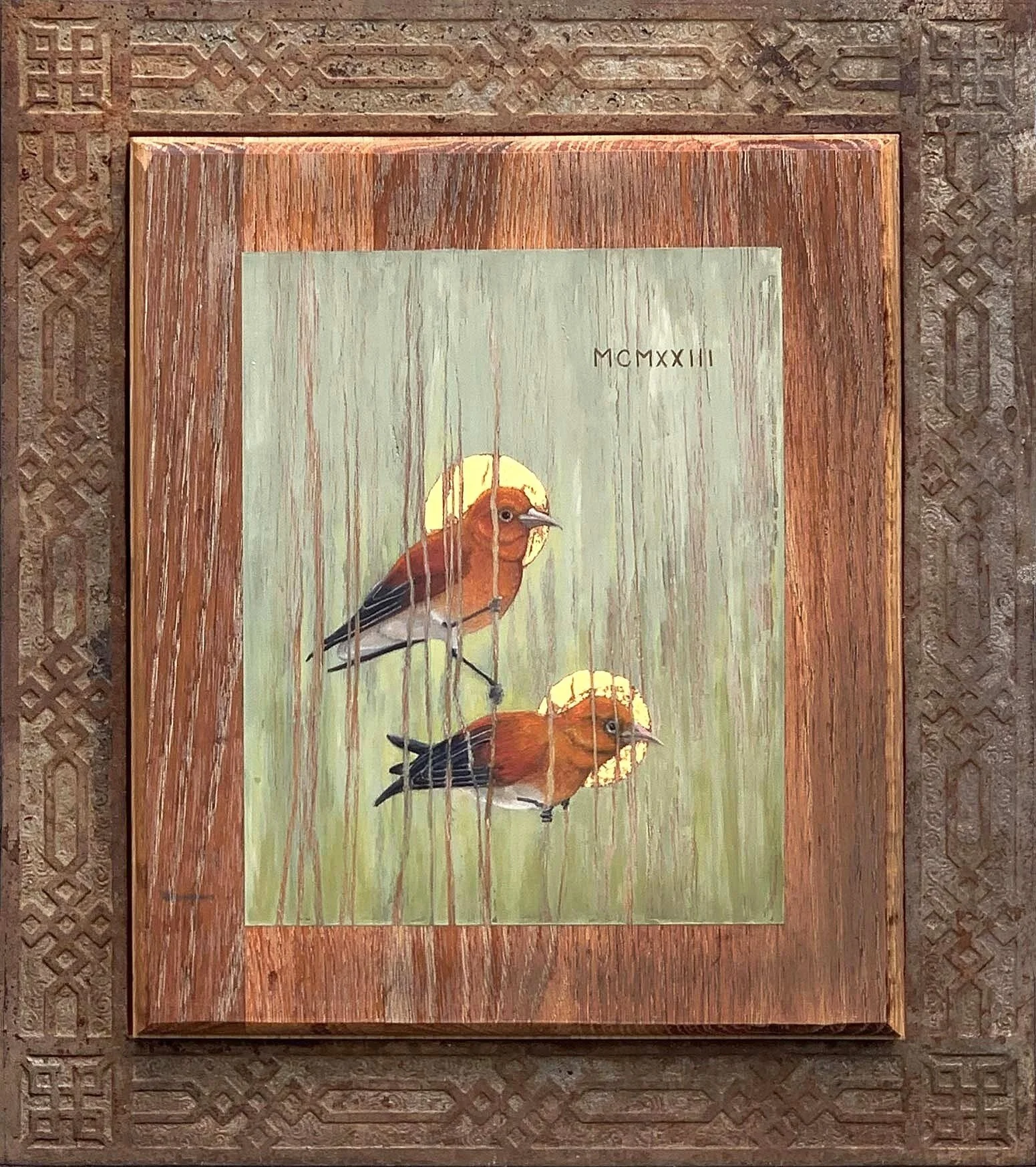Jody Olcott | Apotheosis
November 6 - 28, 2021
Reception: Saturday, November 6, 2 - 5 pm
Laysan Honey Creeper | Endemic to the island of Laysan widespread habitat destruction was the catalyst of their demise; the final act being a violent storm, in which what were considered the final three individuals were killed, declared extinct in 1923.
In the late 1800s and early 1900s, guano and feather harvesters killed thousands of birds. In addition, European hares and guinea pigs were introduced to the island, and quickly consumed nearly all vegetation on the island, including nectar sources for the Laysan honeycreeper. All these events led to the rapid decline of the ecosystem on Laysan. These events caused a public outcry, which led President Theodore Roosevelt to declare the Northwestern Hawaiian Island chain a bird sanctuary in 1909.
oil and gold leaf on panel, 18h x 16w x 1.5d inches
“Apotheosis,” Jody Miller Olcott’s second solo exhibition at Morpeth Contemporary features diverse animal species that serve as beautiful messengers of a difficult reality: We find ourselves in one of the most explosive extinction episodes in history.
Like "Requiem," Olcott’s 2017 solo show at Morpeth that introduced this series, "Apotheosis" reveals extinct – recognizable by their gold halos – and critically-endangered animals. Olcott’s religion is nature, and her deification of these species is her very personal way of paying respect to them, and bringing broader awareness to the plight of the animal kingdom.
Delving further into these animals’ stories, the show also reveals their protectors – from Saint Francis of Assisi to today’s scientists – and their original natural habitats. Connecting the animals from around the world is the thread of human actions determining their fate -- in some cases, extinction; in others, successful breeding and repopulation.
Olcott begins by selecting the animals. This show includes the Barbery Lion (North Africa), the Asiatique Cheetah (Iran), the Passenger Pigeon (North America), and the Harlequin Frog (Costa Rica/Panama). She then departs from the tradition of Byzantine icons to create altarpiece-inspired environments, using salvaged wood from church organs, shipping molds, and discarded furniture. Some of the wood environments echo their inhabitants, such as the animal-footed table legs used to contain the cheetah, and some of the painted settings reveal features of the animals’ original home countries. Most striking, however, are the gold halos that signal these animals’ extinction, and the “lifelike” detail with which Olcott paints their distinct coats, feathers, poses, and faces.
What Olcott also captures in this series are the animals that conservation efforts are reintroducing to us. Such is the case with Guam kingfisher, for example, a once common bird on that island that found itself prey to a human-introduced invasive snake. It became extinct in the wild for 30 years but stands ready to be released back into the wild after intensive breeding efforts in the U.S.
Throughout the show is a message to support ongoing efforts to protect animals, serve as stewards ourselves, and focus, as Henry Paulson puts it, “as much on the exquisite beauties of this earth as on its staggering losses.”

